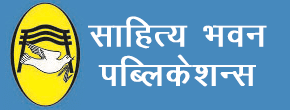प्रस्तुत अर्थशास्त्र Economics पुस्तक कोल्हान विश्वविद्यालय, चाईबासा के बी. ए. (ऑनर्स) अर्थशास्त्र, सेमेस्टर III के तीनों प्रश्न-पत्रों के (CBCS) नवीनतम पाठ्यक्रमानुसार तैयार की गई है।
पुस्तक में तीनों प्रश्न-पत्रों के प्रत्येक शीर्षक को अत्यधिक सरल भाषा में स्पष्ट करने का पूर्ण प्रयास किया गया है। राजस्व विषय को पूर्णतः नवीनतम बनाया गया है।
अर्थशास्त्र Economics Syllabus B.A (Hons.) Semester III of Kolhan University
Core Course – 5 Macro Economics
Unit 1: National Income and Social Accounts
Concept and Measurement of National Income in Different Methods.
Unit: Output and Employment
Say’s Law of Markets and The Classical Theory or Employment, Keynes’s objection to the Classical Theory, aggregate demand aggregate supply function, the principle of effective demand, consumption function – Average and Marginal Propensity to consume, factors influencing consumption function, the Investment – autonomous and induced investment, marginal efficiency of capital.
Unit 3 : Rate of Interest
Classical, Neo-Classical and Keynesian and Post Keynesian Theories of Interest.
Unit 4 : Trade Cycles
Nature and Characteristics, Hawtrey’s Monetary Theory, Hayek’s Over Investment Theory, Keynesian Theory of Trade Cycles, Hicksian Theory of Trade Cycle, Control of Trade Cycles.
Core Course – 6 International Economics
Unit 1: Importance of Trade and Trade Theories
Importance of the study of International Economics, Inter-regional and International Trade, Theories of Absolute Advantage, Comparative Advantage and Opportunity Cost, Heckshcher – Ohlin Theory of International Trade – its main features, assumptions and limitations.
Unit 2: Gains from Trade
Gains from Trade – their measurement and distribution, Trade as an engine of economic growth, Concepts of terms of trade and their importance in the theory of trade, Doctrine of reciprocal demand – its importance and limitations in the theory of trade.
Unit 3: Tariffs and Quotas
Types of tariffs and quotas, their impact in partial equilibrium analysis, Free trade and policy of tariffs in relation to economic growth with reference to India, Concept of optimum tariffs.
Unit 4: Balance of Trade and Balance of Payments
Concepts and components of Balance of Trade and Balance of Payments, Equilibrium and Disequilibrium in Balance of Payments, Consequences of disequilibrium in Balance of Payments, Various measures to correct deficit in the
Balance of Payments, Relative merits, demerits and limitations of devaluation, Concept and implication of Foreign Trade
Multiplier, Functions of IMF, World Bank and GATT/WTO, Reform of the International Monetary System and India.
Core Course – 7 Public Finance
Unit 1: Nature and Scope of Public Finance
Meaning and Scope of Public Finance, Distinction between Private and Public Finance, Public goods Vs Private Goods, The Principle of Maximum Social Advantage, Market Failure, Role of the Government.
Unit 2: Public Expenditure
Meaning, Classification and Principle of Public Expenditure, Canons and Effects of Public Expenditure, Trends in Public Expenditure and Causes of Growth of Public Expenditure in India.
Unit 3:Taxation
Sources of Public Revenue; Taxation – Meaning, Canons and Classification of Taxes, Division of Tax Burden – the Benefit and Ability-to-Pay Approaches, Impact and Incidence of Taxes, Taxable Capacity, Effects of Taxation, Characteristics of a Good Tax System, Major Trends in Tax Revenue of the Central and State Governments in India.
Unit 4: Public Debt and Financial Administration
Sources of public Borrowing, Effects of Public Debt, Methods of Debt Redemption, The Public Budget – Kinds of Budget; Economic and Functional Classification of the Budget.
अर्थशास्त्र Economics Book विषय-सूची
Core Course – 5 समष्टि अर्थशास्त्र (Macro Economics)
- राष्ट्रीय आय (अवधारणा तथा माप)
- राष्ट्रीय आय लेखांकन
- रोजगार का प्रतिष्ठित सिद्धान्त : ‘से’ का बाजार नियम
- कीन्स का रोजगार सिद्धान्त (समग्र मांग व समग्र पूर्ति फलन तथा प्रभावपूर्ण मांग का सिद्धान्त)
- उपभोग प्रवृत्ति अथवा उपभोग फलन
- विनियोजन (प्रकार या वर्गीकरण तथा पूंजी की सीमान्त क्षमता)
- ब्याज दर निर्धारण के सिद्धान्त (प्रतिष्ठित, नव-प्रतिष्ठित, केन्सीय तथा केन्सेत्तर (या आधुनिक) सिद्धान्त)
- व्यापार चक्र (प्रकृति, विशेषताएं एवं सिद्धान्तकृहिक्स, हाट्रे हेयक तथा कीन्स)
Core Course – 6 अन्तर्राष्ट्रीय अर्थशास्त्र (International Economics)
- अन्तर्राष्ट्रीय अर्थशास्त्र (अर्थ, आवश्यकता, महत्व एवं प्रभाव)
- अन्तर्क्षेत्रीय एवं अन्तर्राष्ट्रीय व्यापार
- अन्तर्राष्ट्रीय व्यापार के सिद्धान्त (निरपेक्ष लाभ का सिद्धान्त, तुलनात्मक लाभ (लागत) सिद्धान्त, अवसर लागत का सिद्धान्त तथा हेक्सचर-ओहलिन का सिद्धान्त)
- अन्तर्राष्ट्रीय व्यापार से लाभ
- अन्तर्राष्ट्रीय व्यापार एवं आर्थिक विकास (विदेशी व्यापार आर्थिक विकास का इंजन है)
- व्यापार की शर्तें (अवधारणा तथा महत्व)
- पारस्परिक या प्रतिपूरक मांग का सिद्धान्त (महत्व एवं सीमाएं)
- प्रशुल्क अथवा तटकर (प्रशुल्क के प्रकार, आंशिक साम्य विश्लेषण मे प्रशुल्क के प्रभाव, अनुकूलतम प्रशुल्क की धारणा)
- आयात अभ्यंश
- स्वतन्त्र व्यापार एवं प्रशुल्क नीति (भारत की आर्थिक वृद्धि के सन्दर्भ में)
- व्यापार-शेष एवं भुगतान-शेष
- अवमूल्यन
- विदेशी व्यापार गुणक
- अन्तर्राष्ट्रीय मुद्रा-कोष
- अन्तर्राष्ट्रीय पुनर्निर्माण और विकास बैंक (विश्व बैंक)
- गैट/विश्व व्यापार संगठन
- अन्तर्राष्ट्रीय मौद्रिक सुधार एवं भारत
Core Course – 7 राजस्व (Public Finance)
- राजस्व (अर्थ, क्षेत्र तथा निजी वित्त एवं लोक-वित्त में अन्तर)
- सार्वजनिक (लोक) वस्तुएं बनाम निजी वस्तुएं
- अधिकतम सामाजिक लाभ का सिद्धान्त
- बाजार की विफलता
- अर्थव्यवस्था में सरकार की भूमिका
- लोक व्यय (अर्थ, महत्त्व, वर्गीकरण और नियम या सिद्धान्त)
- लोक व्यय के प्रभाव
- भारत में सार्वजनिक (या लोक) व्यय की प्रवृत्ति तथा सार्वजनिक व्यय में वृद्धि के कारण
- लोक आगम (आय) के स्रोत
- करारोपण (अर्थ, सिद्धान्त एवं करों का वर्गीकरण)
- करभार का वितरण (लाभ तथा कर-देय योग्यता का दृष्टिकोण)
- करभार (कर का दबाव) तथा करापात (कर-भार)
- करदान क्षमता
- करारोपण के प्रभाव
- अच्छी कर प्रणाली के गुण
- भारत में केन्द्रीय एवं राज्य सरकारों के कर आगम की प्रमुख प्रवृत्तियां
- लोक (या सार्वजनिक) ऋण के स्रोत
- लोक ऋण के प्रभाव
- लोक ऋण के शोधन की रीतियां
- लोक (या सार्वजनिक) बजट (आशय, महत्व, प्रकार तथा वर्गीकरण)
















![इतिहास [History] [for Ranchi University] - Sahitya Bhawan Publications](https://i0.wp.com/sahityabhawanpublications.com/wp-content/uploads/2018/02/2934-History_curve.jpg?resize=247%2C300&ssl=1)



Reviews
There are no reviews yet.